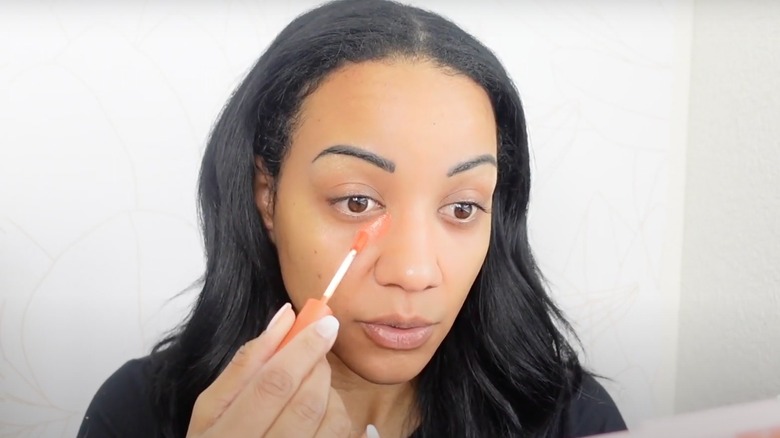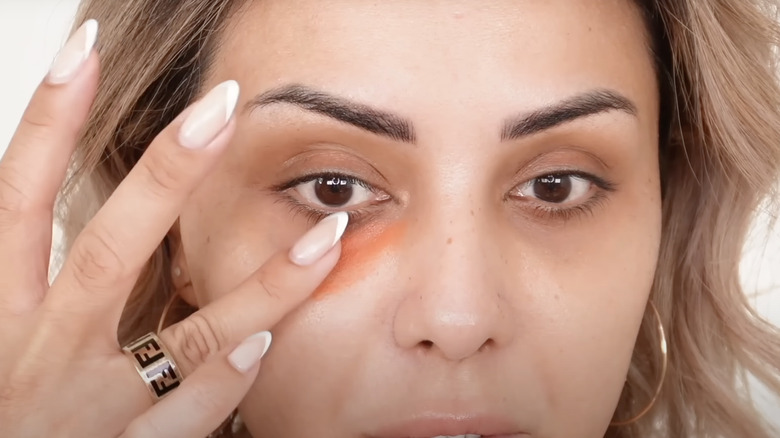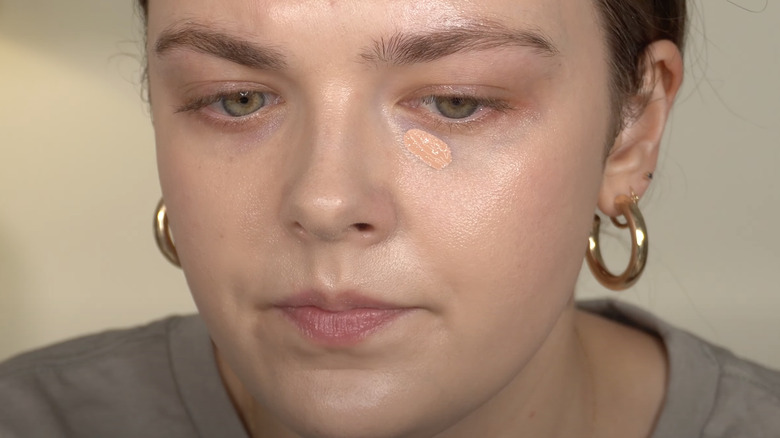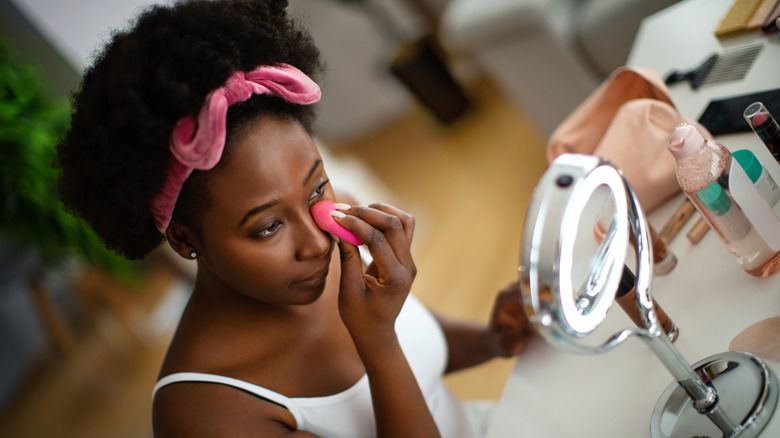What Are The Benefits Of An Orange Color-Correcting Concealer?
Dark circles have the annoying ability to sap the life out of your face, casting a perpetual shadow in the center of your face. Those with permanent dark circles, therefore, are no strangers to the life-saving benefits of under-eye concealer. But, sometimes, under-eye concealer simply doesn't cut it, and your dark spots still manage to show past the layers of concealer and foundation. Enter: color-correcting concealer.
"Instead of camouflaging and blending the way that concealer does, color correctors cancel out discoloration by neutralizing it and making dark circles and blemish marks less obvious," celebrity makeup artist Jenny Patinkin tells The Zoe Report. Makeup artists also use color correctors to cancel out redness from acne and brown spots from hyperpigmentation, per Foreo. Orange color-correcting concealer specifically targets dark circles and shadows on your skin that regular concealer is unable to mask. So, if you are tired of rocking the zombie girl aesthetic, then it's time for you to update your beauty routine.
Conceal discoloration with orange color corrector
The purpose of orange color-correcting concealers is to neutralize dark pigmentation and create an even-toned base for your makeup. Some people tend to develop dark patches or melasma due to genetic reasons or health conditions, so color correctors really come in handy when dealing with skin flare-ups or severe discoloration, per a 2009 study published in Human Molecular Genetics.
The key to using color correctors is understanding how colors combine with various undertones and shades of skin. According to color theory, you should look for a shade opposite to the discolored area to cancel it out (via the QC Makeup Academy). In the beauty world, opposing colors are referred to as complementary hues. Orange and blue happen to be complimentary shades, so layering an orange-toned corrector over areas of skin with blue or purple pigment will neutralize the discoloration.
"Orange color corrector is intended to neutralize dark spots, scars, under-eye circles, areas that may turn gray under foundation, or other stubborn and relatively cool-toned blemishes," makeup artist William Scott tells Byrdie. Orange concealer also reduces the appearance of brown spots or hyperpigmentation, per Nyx Cosmetics.
What's the difference between peach and orange color correctors?
Before you head to the shop for an orange concealer, you should know that orange only neutralizes discoloration when layered with certain shades of skin. Orange color corrector works well if you have a medium to dark complexion, but it will be less effective for those with fair skin (via Foreo). "The darker the pigmentation, the darker the corrector will need to be," makeup artist Bina Khan explains in an interview with The Zoe Report. So, orange may not be suited for those with lighter skin or more cool-toned discoloration. Thankfully, there are other color correctors available to suit different skin tones. "For people with pale skin, a pink color corrector would do what orange does for those with darker skin tones," William Scott shares with Byrdie. "Peach color correctors are versatile in who they work well for and are also intended to counter dark areas."
Peach, salmon, or pink concealers tend to be the starting point for color correction, according to Nathan Johnson, executive makeup artist at QC Makeup Academy, and sometimes work for medium skin tones depending on the individuals' unique undertones.
How to apply orange concealer
To effectively blend a color corrector with your foundation and concealer, begin with moisturized skin. Color corrector should be the first product you apply to your skin, as this will allow you to apply foundation on an even base. Most color-correcting concealers have liquid or cream consistencies, but they sometimes stick to the crease in your skin — and after several layers of product, your makeup can appear cakey. To avoid a cakey texture, use a primer before you apply your orange corrector. It's also important to apply your corrector sparingly. Only apply a thin layer to the areas that need it, and fully blend it in with a small sponge to avoid spreading it to other areas. After blending in your orange corrector, wait a moment to allow the product to work its magic before moving in with your regular concealer and foundation.
If you don't have an orange color corrector, experiment with a flesh-toned concealer containing a strong orange undertone (via Maybelline). Color correctors act as highly pigmented concealers, so a standard concealer will also reduce the appearance of dark circles and discoloration. You can also get creative and use a combination of red, orange, and peach lipstick shades until you find the right color for your skin.



